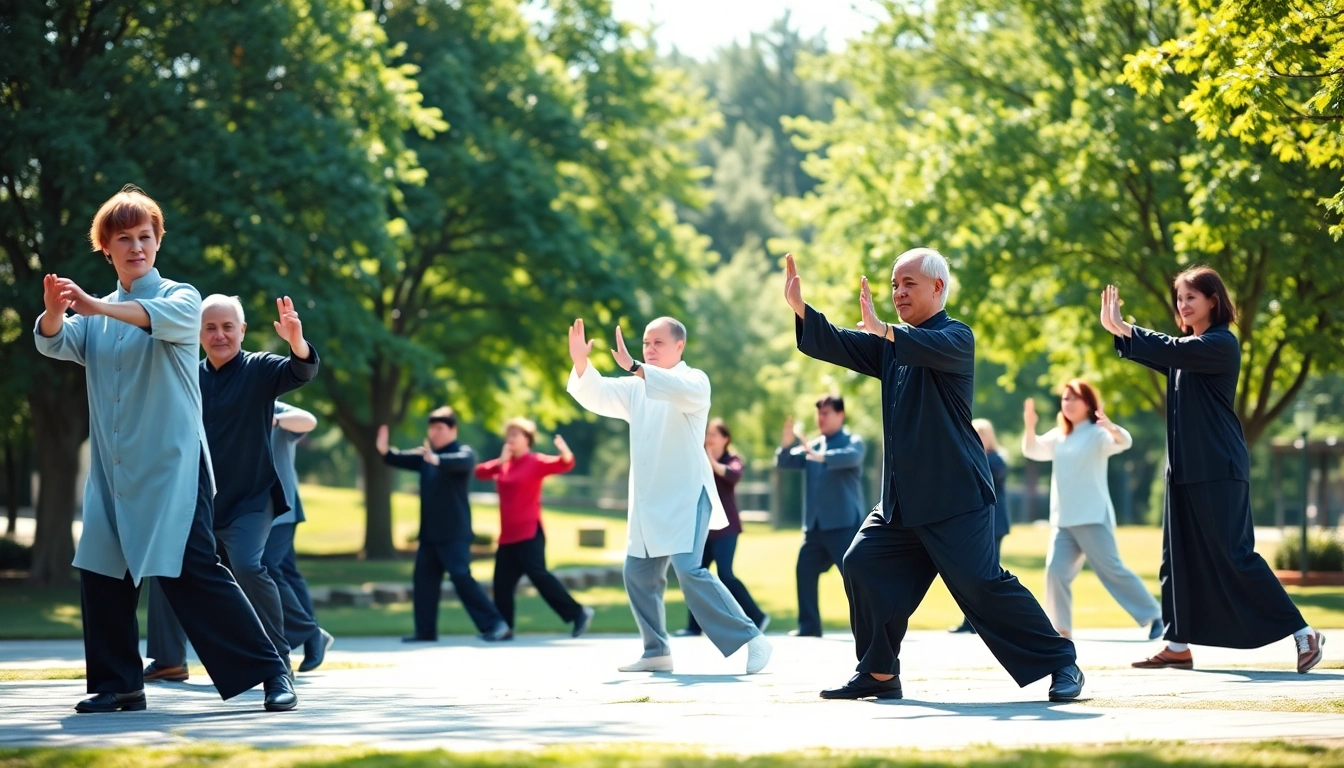Understanding Tai Chi: Origins and Benefits
A Brief History of Tai Chi
Tai Chi, an ancient Chinese martial art, combines elements of meditation, relaxation, and martial techniques. Its roots trace back several centuries, with some historians suggesting its formation can be linked to traditional Chinese philosophies, particularly Taoism. Initially developed as a form of self-defense, Tai Chi has evolved into a holistic practice that emphasizes well-being over combat. The slow, deliberate movements reflect a harmony with nature, embodying the yin-yang philosophy deeply embedded in Chinese culture.
Over time, Tai Chi has garnered immense popularity worldwide, transcending its martial roots to become an essential practice for enhancing health and well-being. Today, practitioners engage in Tai Chi not only to improve physical fitness but also to cultivate mental clarity and emotional resilience.
Health Benefits of Practicing Tai Chi
Engaging in Tai Chi offers numerous physical and mental health benefits. Research indicates that regular practice can lead to improved balance, flexibility, and overall physical fitness. Notably, Tai Chi enhances muscle strength and reduces the risk of falls among older adults, making it an excellent option for aging populations.
Psychologically, practitioners report reduced stress levels, increased relaxation, and enhanced mood. The meditative aspects of Tai Chi foster mindfulness, helping individuals connect more deeply with their inner selves. Medical studies suggest that Tai Chi can also aid in managing chronic conditions such as arthritis, hypertension, and even insomnia.
How Tai Chi Connects Mind and Body
One of the pivotal elements of Tai Chi is its focus on mindfulness—the ability to remain present in the moment. Each movement is performed slowly and deliberately, allowing practitioners to cultivate awareness of their bodies and environments. This connection fosters a greater understanding of one’s physical capabilities and limitations, which is crucial for personal growth and effective practice.
The integration of breath with movement enhances the mind-body connection, promoting relaxation and reducing mental distractions. Studies indicate that practicing Tai Chi can produce significant reductions in anxiety levels and improve overall mental health, creating a balanced approach to wellness.
What to Expect from an Online Tai Chi Course
Course Structure and Content Overview
When enrolling in an Online Tai Chi Course, understanding the course structure is essential. Typically, courses are segmented into modules that cover various forms, techniques, and principles of Tai Chi. Each module may include video demonstrations, instructional content, and accompanying resources that enhance the learning experience.
Courses also vary in duration—some being short-term workshops while others span several weeks or months. This flexibility allows practitioners of all levels to engage with the practice at their own pace, catering to individual schedules and learning preferences.
Skill Levels and Progression in Online Tai Chi Course
Most online Tai Chi courses accommodate all skill levels, from complete beginners to seasoned practitioners. Beginner modules typically focus on foundational movements and postures, emphasizing the importance of form and technique. As students progress, they can expect to delve into more complex forms and applications of Tai Chi.
Advanced students might explore variations, applications for self-defense, or even the philosophical underpinnings of Tai Chi. Many courses include assessments or progress tracking tools that allow students to measure their development over time, providing motivation and a sense of achievement.
Interactive Features and Community Support
One of the appealing aspects of online Tai Chi courses is the community element often included. Many platforms facilitate interaction among students through forums, live Q&A sessions, or social media groups. This community support is invaluable for sharing experiences, seeking tips, and fostering connections with fellow Tai Chi enthusiasts.
Additionally, features like live classes or webinars can enhance learning by allowing real-time feedback from instructors. This interactivity can help students feel more engaged and less isolated in their learning journey, contributing positively to their practice.
Choosing the Right Online Tai Chi Course for You
Evaluating Course Content and Instructors
Selecting the right online Tai Chi course involves careful consideration of the course content and the qualifications of the instructors. Research potential instructors’ backgrounds, looking for certified professionals with extensive experience in Tai Chi and teaching methodologies. Their knowledge not only helps in refining your technique but also ensures a deeper understanding of Tai Chi principles.
The curriculum should be comprehensive, covering essential movements, history, and philosophy of Tai Chi. Look for courses that offer a blend of theory and practical application, allowing a well-rounded learning experience.
Comparing Pricing and Formats of Online Tai Chi Course
Costs for online Tai Chi courses vary significantly based on duration, format, and content quality. While some courses may require a one-time fee, others might operate on a subscription basis, allowing ongoing access to resources and new content over time.
When comparing pricing, consider any additional resources included—such as downloadable guides or access to community forums—as these can enhance your overall experience. Understanding what you receive for the price helps in determining the best value for your investment.
Reading Reviews and Testimonials
Before committing to a course, reading reviews and testimonials is crucial. Feedback from former students provides insights into the course experience, instructor effectiveness, and overall satisfaction. Look for courses with high satisfaction ratings and constructive feedback, demonstrating the course’s ability to cater to students’ needs.
Online platforms often display student testimonials, which can be indicative of the course’s value and effectiveness in teaching. Positive reviews frequently highlight community engagement, instructor support, and the impact of the course on individual wellness journeys.
Best Practices for Effective Tai Chi Training
Setting Up Your Training Space
A conducive training environment is essential for maximizing the benefits of Tai Chi practice. Choose a quiet space with ample room to move freely. Ensure the floor is even and clear of obstacles, reducing the risk of injury while practicing. Good lighting and ventilation also contribute to a comfortable training atmosphere.
Incorporate elements that enhance focus and tranquility, such as calming decor or nature-inspired elements. Creating a personalized space can significantly enhance your motivation and commitment to practice.
Integrating Tai Chi into Your Daily Routine
To truly benefit from Tai Chi, incorporating it into your daily routine is vital. Aim for consistency rather than lengthy sessions; even 20-30 minutes of focused practice each day can yield significant improvements. Consider setting a specific time for your practice, such as early morning or after work, to establish a routine.
Incorporating Tai Chi into other activities—such as practicing during breaks or integrating mindful movement into your errands—can also deepen your practice. Striving for mindfulness throughout the day reinforces the principles of Tai Chi, extending its benefits beyond formal practice sessions.
Using Technology to Enhance Your Learning
Embrace technology as a valuable ally in your Tai Chi journey. Numerous apps and online resources provide instructional videos, guided practices, and community support. Utilizing these tools can enhance your understanding and technique, especially when practicing alone.
Additionally, wearable technology can help track your progress, offering insights into your practice patterns, balance, and activity levels. This data can be essential in setting goals and measuring improvements over time.
Measuring Progress and Staying Motivated
Tracking Your Tai Chi Journey
Keeping a journal or log of your Tai Chi practice can be a powerful motivator and a tool for self-reflection. Documenting your daily practice, feelings, and challenges provides insight into your growth and areas for improvement. Reflection is a key component of personal growth within Tai Chi.
Consider creating a visual tracker or timeline of specific skills or forms you wish to master. This clear pathway can motivate you to stay committed to regular practice and celebrate your accomplishments, no matter how small.
Setting Achievable Goals in Online Tai Chi Course
Goal-setting is an essential part of any learning process, including Tai Chi. Break down your journey into smaller, achievable milestones that can help guide your practice. Whether mastering a new form, increasing flexibility, or achieving a greater sense of mindfulness, well-defined goals can provide direction.
Ensure that your goals are clear and attainable, and consider adjusting them as you progress. This adaptability fosters resilience and encourages continuous practice, key elements for achieving success in your Tai Chi journey.
Finding a Tai Chi Mentor Online
A mentor can be a significant asset in your Tai Chi practice. Online communities and forums often foster connections between experienced practitioners and students. Engaging with a mentor can provide tailored feedback, guidance, and ongoing encouragement.
Seek out online resources or social media groups where experienced Tai Chi practitioners share their knowledge. This interaction not only enhances your understanding of Tai Chi but can also create a support network that keeps you inspired.



